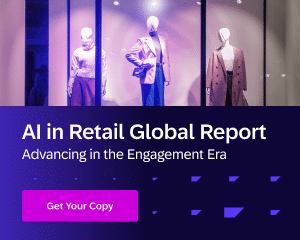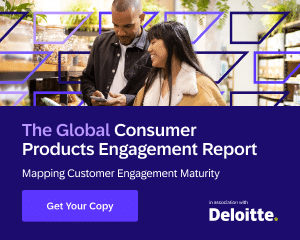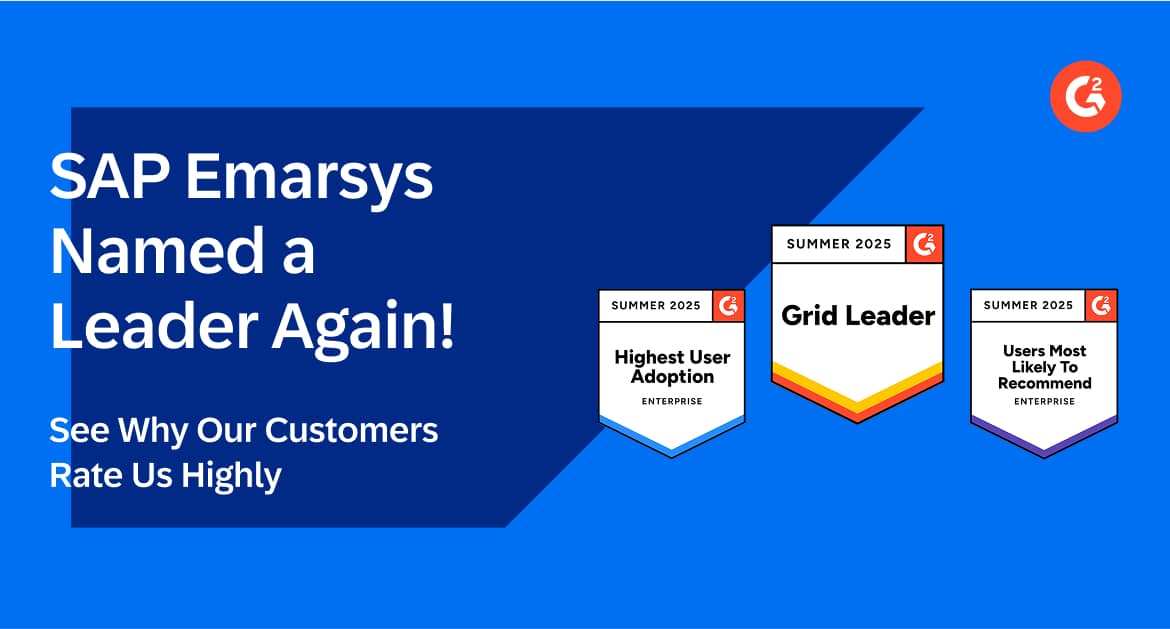Although there are many reasons why companies use data-driven marketing, more often than not, its intended goal is to enhance and personalize the customer experience.
To provide more clarity around the topic, we’ve outlined common challenges and key advantages of data-driven marketing, in addition to example applications.
What is Data-Driven Marketing?
Data-driven marketing has transformed from an innovative approach to a fundamental part of advertising and business strategy; it can now be defined in several ways, but at the most basic level, it can be explained as follows:
Data-driven marketing refers to strategies built on insights pulled from the analysis of big data, collected through consumer interactions and engagements, to form predictions about future behaviors. This involves understanding the customer data you already have, the data you can get, and how to organize, analyze, and apply that data to better marketing efforts.
This type of marketing is different from traditional marketing in that it allows marketers to connect with customers in the right place, at the right time, and with the right offering. Traditional marketing involves a lot of trial and error when it is not supported by solid data and analytics. Data backed marketing allows for further personalization, enhanced targeting, and precise benchmarking so that marketers can continue to improve their strategies over time.
The Benefits of Data-Driven Marketing
Both businesses and consumers can gain a lot from taking a data-driven approach to marketing. When strategies are implemented successfully, such benefits include:
1. Personalized Marketing
It’s essential that companies convey the right message, to the right audience, at the right time. Data-driven marketing allows brands to create a customized campaign that converts leads through a deeper understanding of the customer profile. Personalized marketing allows brands to truly engage with customers at an individual level which, in turn, increases customer loyalty and ROI.
2. Clear-Cut Clarity
With a wealth of information in their database, marketers can sift through to determine the most accurate and actionable information about customers and prospects. With a data-driven approach, it becomes much easier to separate and group the target audiences that you’re trying to reach. This type of segmentation strategy can further enable personalization and drive customer engagement.
3. Multi-Channel Experience
Marketers can leverage data to extend reach across multiple networks, and take communication beyond just email to deliver a truly omnichannel experience. Distributing data-driven ads across channels, through automated marketing campaigns, will ensure that your message is consistent, aligned, and reaches each recipient in the perfect place and at the perfect time.
4. Refined Customer Experience
Many popular brands use data-driven marketing to enhance their customer experiences. They’ll often orchestrate customer satisfaction surveys and pinpoint specific areas for improvement.
5. Better Product Development
Data-driven marketing considerably diminishes product failure rates. Companies can establish a better understanding of their target audiences, which leads to the development of better-suited products for that particular market.
➤Discover how our data-driven marketing solutions can improve your business.
The Challenges of Data-Driven Marketing
Like most valuable business strategies, there are challenges to successful data-driven marketing. Let’s take a look at some of the most common struggles:
1. The Right Team
Due to the niche nature of the job, and the skills required, it can be challenging to attract the right type of staff that specializes in predictive analytics or audience amplification. Learning more about being data-driven (or becoming a data scientist) may benefit you and your team.
2. Departmental Silos
The success of data-driven marketing is largely dependent on having high-quality and integrated data, which is no easy task to obtain. Frequently, different departments will acquire data with goals that contradict one another.
3. Commitment
It would seem foolish to incorporate a data-driven marketing strategy if you aren’t completely committed to it, yet there are some companies that continue to make that mistake. Even though they might possess a defined strategy, it won’t mean much if they aren’t acclimated with the tools needed to succeed.
4. Integration
If a company fails at the integration process, marketers will struggle to gather the right data needed for a 360-degree customer view. For example, retail companies and e-commerce websites are often challenged with the task of collecting and structuring data from social media and mobile devices.
How to Create a Data-Driven Marketing Strategy
If you are looking to get started on creating a data-driven marketing strategy, here is a quick step-by-step overview of the process:
- Step 1: Define Objectives. Before you start collecting data, you must define a clear goal for your data. Start by setting up objectives for your data, this will help you figure out the type of information you need to collect and where to get it from.
- Step 2: Gather Data. Review your objectives and consider what particular kinds of data would help inform your strategy. Then, make sure to get access to the tools you need to collect this data.
- Step 3: Collect and Organize Data. This step requires you to choose a data platform that can be used to organize all of the data you have collected and keep track of your data sources.
- Step 4: Gain Insights Through Data Analysis. Depending on your objectives, you might need to develop a team or leverage in-house or external resources to help you extract information and gain insights from the data. A good data platform may have these capabilities built-in.
- Step 5: Select Your Channels. Once you’ve analyzed your data, you will be able to select the right channels on which to run your campaign. You might choose email marketing, web-based content marketing or another channel that your audience is on.
- Step 6: Launch Your Campaign. Finally, launch your campaign and see how it does.
- Step 7: Measure Performance. Be sure to monitor your campaign results, calculate your ROI and report on progress to major stakeholders. Then, you can take what you’ve learned from execution to improve your next campaign.
Data-Driven Marketing Tools
Here are a few tools to consider for helping you track, manage, and analyze your customer data:
Automation: Data sources like e-commerce, app, and store data can be connected to the automation layer of your customer engagement platform, and leveraged across all campaigns and channels. Seek out tools that offer campaign reporting for your automations so you can measure revenue uplift as well. Having fully integrated omnichannel automation simplifies your cross-channel execution, and helps you streamline your marketing across all touchpoints, not just individual channels.
AI Marketing: Adding the power of artificial intelligence and predictive analytics to your marketing lets you access untapped revenue potential by preemptively, and more accurately, predicting your customers’ next moves. AI learns your customers’ behaviors — and uses data in real time — to engage them with relevant, contextual personalized messages before they churn, become inactive, or abandon cart. Artificial Intelligence along with your automation tech can help you optimize send times so your messages reach customers when they are most receptive.
Reporting: Today’s marketing teams are asked to move the needle on business outcomes, which means your ability to measure marketing’s impact on revenue is critical. Having a customer engagement platform with built-in revenue attribution enables you to make make data-driven decisions that positively impact your company’s bottom line. Although marketing’s primary focus should be on creating remarkable customer experiences, you’ll want a tool that gives you comprehensive reporting on operational and strategic metrics, and keeps you updated on which channels are most profitable, and where you’re driving growth.
Examples of Data-Driven Marketing
If you’re still unsure how this type of marketing might fit into your business strategy, here are a few data-driven marketing examples that should offer some inspiration:
- Retargeting. Retargeting is important for all digital marketers. If someone has previously purchased from your e-commerce site or shown significant interest, why not look for them again? Let’s pretend a member of your target audience is a travel enthusiast who recently booked a vacation ski trip in Vermont. From this data, you could automatically offer relevant deals on ski lessons, lodging, airfare, and similar vacation ideas that would appeal to that target audience.
- Dynamic Advertising. Use social media to your advantage by creating ads across Facebook, Twitter, and Instagram. Connect with your audience by allowing them to sign up and receive more information with just one click. By turning your social media outlets into two-way communication channels, you’ve now obtained valuable information that feeds directly into your database.
- Optimized Paid Search. Analyze your preferred customers based on the types of keywords they search for and consider what the competition is targeting as well. Leverage this data to position yourself at the top of the most relevant search results and drive valuable traffic to your website.
- Targeted Email Campaigns. Is email marketing a part of your existing strategy? Take a data-driven approach to email campaigns by grouping together your desired target audiences. While this data will allow for automation, you’ll also be able to easily personalize messages to make one-to-one connections with each and every customer.
Final Thoughts
The future remains very bright for data-driven marketing. Along with predictive and artificial intelligence marketing, data-driven solutions are becoming an essential part of successful marketing campaigns. In large part, this is due to the progressive needs of customers and their expectations for more personalized experiences.












